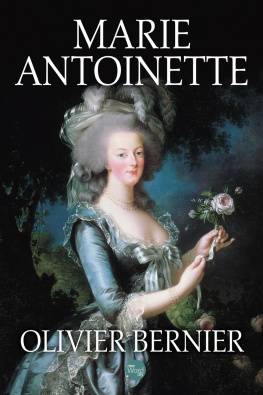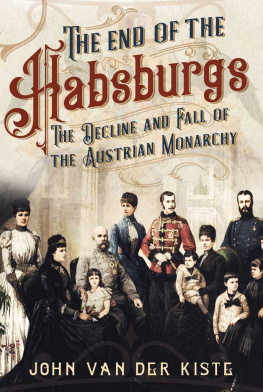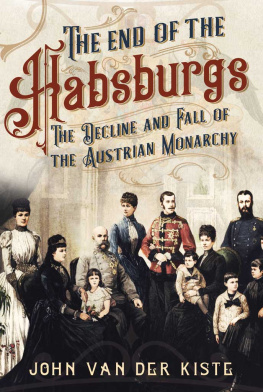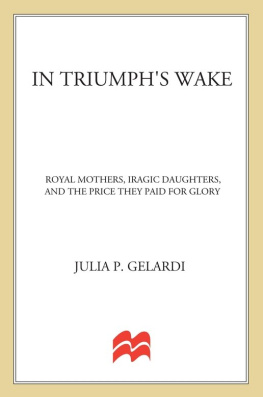Book Description
In 1740, destiny sweeps the young Maria Theresa of Austria to the top of the Habsburg throne. The twenty-three-year-old greenhorn turns out to be dynamite: with vigor, determination and great charm, Habsburgs only woman ruler parries the onslaught of a host of enemies, has sixteen children in twenty years by her beloved husband, Francis of Lorraine, reforms her huge Habsburg Empire from head to toe and parties as if there were no tomorrow. Its focus on the strong, colorful personalities of Maria Theresa, her family and other leading figures of her age, makes this a most entertaining and immensely readable historical account.
Title Page
Maria Theresa of Austria
Full-Blooded Politician, Devoted Wife & Mother-to-all
13 photographs
Regine Neuhauser
www.regineneuhauser.com
Table of Contents
Copyright Notices
third revised and extended edition 2021
Copyright 2021 by Regine Neuhauser
All rights reserved. No part of this publication may be reproduced, stored in a retrieval system, or transmitted, in any form or by any means, electronic, mechanical, photocopying, recording or otherwise, without the prior written permission of the publisher.
Photograph on front cover: Maria Theresa by Martin van Meytens the Younger, dated around 1741. National Gallery of Slovenia
This eBook was designed by Regine Neuhauser and manufactured in Austria
Dedication
to
All great women who have ever walked the earth.
Introduction
Why would one be tempted to write a biography about Maria Theresa of Austria? What a question! Because she was a Habsburg, of course! readers might say, quick as a flash. They have got a point. The Habsburgs were one of the most prestigious royal dynasties in Europe. Starting on a shoestring, they held small possessions in Alsace and northern Switzerland, deriving their name from their family seat, the Habsburg Castle (Hawk Fortress), located between Zrich and Basel. Then, in 1282, they secured Austria for their family, which they governed until 1918. However, the greatest leap forward towards becoming global power players occurred around 1500 when a series of dynastic marriages enabled them to expand their domains many times over to include also the Duchy of Burgundy, Southern Italy, the Mediterranean Islands, Spain and its colonial empire in the Americas and Asia, as well as Hungary and Bohemia. Let others wage war. Thou, O happy Austria, marry was a common saying, referring to the Habsburgs successful marital politics, with the help of which they built an empire on which the sun never set. Furthermore, the Habsburgs occupied the throne of the Holy Roman Empire, founded by Charlemagne in 800, for most of the time between 1273 and its fall after 1800.
This is all well and good, but why her? some readers might wonder, as she is only one out of over 30 Habsburg rulers who governed Austria for 640 years. Well, because she stands out as the only woman ruler of the Habsburgs, never meant to rule, trained as a young lady, in the dullest sense of the term, to become a submissive wife in the background of some king or duke. But then, when deaths in her family and fate unexpectedly sweep her to the top of the Habsburg throne, the twenty-three-year-old, innocent greenhorn is transformed into a highly talented, energetic, hard worker with an iron will and great courage, ready to fight tooth and nail against a host of enemies who threaten to strip her of her inheritance. She successfully parries the onslaught of her enemies. Not only that, Maria Theresa, the political realist, becomes one of Austrias greatest reformers by necessity. She realized that only if she overhauls the state mechanism and society as a whole, would the Habsburg Monarchy be fit to face the challenges of the future. Her reforms left hardly a stone unturned in creating a new, viable foundation for the Habsburg Empire, valid until its collapse in 1918. At the same time, she bore sixteen children in twenty years. May the world one day provide us with a magic potion containing Maria Theresa's vigor and vitality!
She possessed superb people management skills and had an eye for the right people at the right time. As a politician with the sound instincts of an animal, she foresaw political developments and dangers lurking on the distant, future horizon with the precision of a seismograph. She thought and acted like a man, while deftly deploying her beauty and feminine wiles. In other words, she let her grace and beauty work on her fellow men and paraded the homely housewife as well as the vulnerable mother in need of assistance and protection. But she was also harsh and incredibly adamantine. She could bang on the table so hard that it made the glasses rattle. It all depended on whom she was dealing with and what she wanted to achieve. This dynamic mix of what gender stereotypes would call female and male attributes in her personality is absolutely key to understanding her success as a ruler; so are her determination and stamina, two typical Habsburg traits. True, she was a Catholic hardliner with zero tolerance toward other religions, overwhelmingly manipulative, and in her later years, the once forward-looking, young, mesmerizingly charming Princess with a fresh spirit became an inveterate conservative, a matriarch and a control freak.
Maria Theresa was a child of her time, but in some respects a better one than most. Although she lagged behind in terms of religious tolerance other European states had already taken that step she never stopped being a lonesome voice for political fairness and contract compliance, in a Europe where certain states began to act on mere brute power politics whenever they felt a craving for more territory. In any case, she remains an outstanding icon in the collective memory of the Austrian people and every Austrian has something to say when asked about Maria Theresa.
*
You make history so interesting, guests often say to me after my lectures. I wish I would have had a history teacher like you. With horror, they recall the endless lists of dates and names that they had to learn by rote to pass the exams. As soon as school was over, the history books went into the bottom drawer of the furthest-flung chest in the basement or ended up in the recycle bin.
However, it is my firm intention to convince my audience that history is fascinating. In my view, history is about people, not about dates. Admittedly, Maria Theresa and her contemporaries lived about 250 years ago. Nonetheless, they were people of flesh and blood like you and me, who, driven by their strengths and weaknesses, ambitions and aspirations, likes and dislikes, whims and wishes, acted out their stories on the great stage of life. The fundamental issues and concerns of humans, such as love and hatred, health and death, victory and defeat, power and money, questions of values and beliefs, have not changed over the ages. The major difference is that most 21 st century readers live in a democratic society among equals, whereas Maria Theresa and her fellow rulers governed as absolutist sovereigns from the top of the social pyramid. The dramas unfolding between these top-level protagonists lie at the origin of the dates that fill conventional history books. The focus of this book is primarily on the human side of the historical protagonists. This approach is to enable the modern reader to relate to these long-gone people. To allow for an immediate reading experience, I wrote the text in the present tense. I avoided the use of academic jargon and kept the framework of dates and factual, historical events to a minimum in order to leave the stage clear for the illustrious Maria Theresa of Austria, her co-stars and their intriguing personalities.









